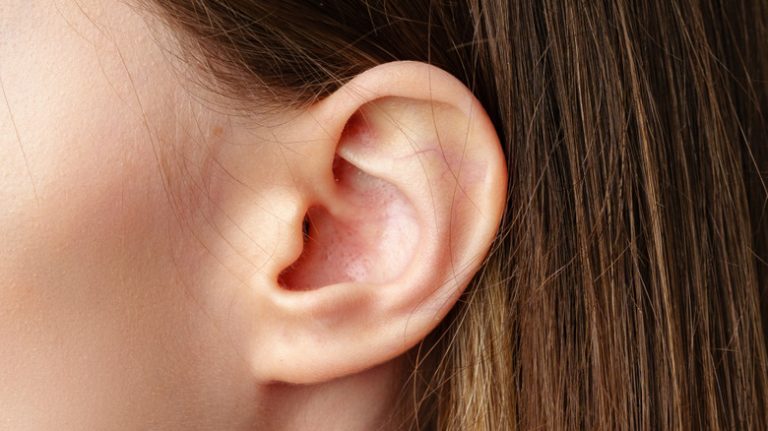Human fingernails fulfill numerous roles. This robust covering on our fingertips provides protection during gripping, reducing the risk of injuries and potential infections. They also facilitate fine motor movements such as scratching, separating, and picking up items. Additionally, nerves beneath the nails contribute to our sense of touch.
Fingernails can also offer valuable insights into our health. For instance, their appearance might indicate kidney disease or a protein deficiency. Beyond these functional aspects, many people enjoy using fingernails for self-expression and beauty enhancement by regularly visiting nail salons for manicures (here’s how to tell if your nail salon is safe).
Interestingly, despite their usefulness, our ancient ancestors did not possess fingernails. Instead, they had claws. So, how did claws transform into fingernails?
How claws evolved into fingernails
Claws were crucial for early mammals, aiding in climbing, digging, and grasping. Over time, as certain mammals, especially primates, adapted to life among trees, the shape and function of claws began to evolve. Sharp claws made small, flexible branches difficult to grasp, so broader, flatter fingertips became advantageous. This evolution led to nails—flattened, keratin-based structures offering protection and stability without hindering fine motor movements.
Nails also enhanced the development of precise gripping abilities. By reinforcing the fingertips, they enabled early primates to handle objects more effectively. As human ancestors transitioned from arboreal to terrestrial environments, the ability to manipulate tools became increasingly important. Broad fingertips supported by nails offered greater control, aiding early humans in shaping tools and interacting with their environment, paving the way for advanced motor skills.
Understanding the structure of fingernails
Fingernails consist of three primary components: the nail plate (the visible hard part), the nail bed beneath, and the surrounding skin. The nail plate is composed of specialized skin cells that produce keratin, a strong, clear protein providing firmness. The pink hue of your nails is due to blood vessels under the nail plate, while the white tips lack vessels. Near the nail base, you might notice a pale half-moon shape called the lunula (here’s what those half-moons under your fingernails can tell you about your health). This is part of the nail root, located under the skin and includes the nail matrix, where new nail cells are formed. Most of the nail is visible, but around 20% lies beneath the skin.
Beneath the nail plate is the nail bed, a soft, sensitive area filled with nerves, blood vessels, and pigment-producing cells. It extends from the nail root to just under the nail tip. On the sides, the nail is bordered by skin folds, and at the base, there’s a small skin ridge called the nail fold. The cuticle, a thin tissue strip at the nail bottom, seals the gap between the nail and skin, protecting against bacteria and infection. On average, fingernails grow about 3 millimeters per month, though this can slow with age or poor circulation. If you lose a fingernail, it might take four to six months to fully regrow (here’s what it means when your fingernails won’t grow).
How fingernails compare to claws
While nails and claws share a common evolutionary origin, a 1985 article in the Journal of Human Evolution highlights significant differences in their structure, function, and distribution. Although claws are widespread among mammals, nails are mostly unique to primates, with a few exceptions in some marsupials. Nails evolved alongside other primate traits, especially opposable thumbs and toes, allowing hands and feet to specialize in grasping and manipulating objects. As digits became more flexible and fingertip bones (phalanges) lengthened and widened to support broad, sensitive pads, claws flattened and widened into nails to accommodate these new structural needs.
Unlike claws, which are thick and curved for digging, climbing, or defense, nails are thinner and more suited for precision. The dense, deep layer providing claw strength became reduced or lost entirely during the transition to nails, possibly surviving only as the thin ventral plate beneath the human nail. Additionally, tendons enabling claw movement became vestigial or disappeared altogether in digits with nails, reflecting the shift from power to fine motor control.
Some early primates had both claws and nails
A 2018 study published in the Journal of Human Evolution challenges long-held assumptions about the early evolution of primate fingernails. Examining fossils from several early primate species, including Teilhardina brandti, one of the oldest known primates, researchers found these ancient animals didn’t have nails on all digits as previously believed. Instead, they exhibited a mix: flat nails on most fingers and specialized grooming claws on others. This discovery suggests the transition from claws to nails was not a clean break but a gradual, complex process.
The study proposes that grooming claws, still found in modern lemurs, lorises, and tarsiers, may have been crucial for early primate survival. Thick body fur could harbor parasites, making grooming claws a valuable evolutionary hygiene tool. Interestingly, some solitary monkey species, such as titi and owl monkeys, have even re-evolved grooming claws, possibly compensating for the lack of social grooming in group-living primates. These findings highlight how small anatomical details can provide significant insights into behavior, social structures, and evolutionary pressures among our earliest ancestors.
How might fingernails evolve in the future?
While it’s impossible to predict the exact trajectory of human evolution, it’s conceivable that our fingernails could transform into another, more useful form; become vestigial, serving no purpose; or disappear altogether. It all hinges on natural selection and which traits prove advantageous for survival in future environments.
Could fingernails revert to claws? While not unheard of, as seen in titi and owl monkeys, certain evolutionary pressures would be necessary to encourage such a change, similar to how these animals may have re-evolved claws to compensate for a lack of grooming partners. In short, unless future environments favor claw-like adaptations, our nails will likely remain as they are: optimized for precision and touch, not for digging, climbing, or fending off predators.




